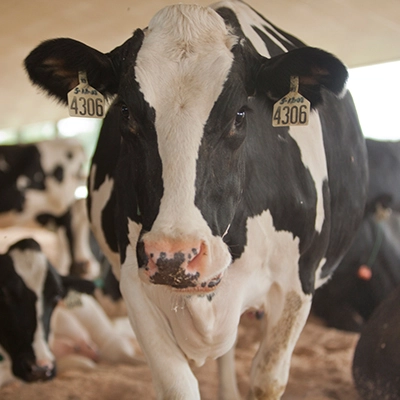Keeping Cows Healthy: It’s What Dairy Farmers Do
Lately I’ve been having more and more conversations about where food comes from, in addition to the quality of the food itself. Other factors, such as how and where food is grown and animal care, also may play a part in peoples’ food-purchasing decisions.
As a health and wellness professional, you may be asked about agriculture and on-farm practices that were likely not part of your health professional/dietetic training. While agricultural sciences may one day be part of training for registered dietitian nutritionists (RDNs), it wasn’t part of mine. However, in my role as President of National Dairy Council, I’ve had the opportunity to meet hundreds of our nation’s dairy farmers and have been on dozens of dairy farms. Here’s what I learned and what I know.
Real milk starts with healthy cows on the dairy farm. Dairy farmers are committed to providing safe, wholesome milk – not only is it the right thing to do, their livelihood depends on it. Cow health starts with a nutritious diet, plenty of water and well-ventilated, well-lit barns — all of which help keep cows healthy. Healthy cows minimize the need for antibiotics. Veterinarians routinely visit dairy farms to conduct check-ups, administer vaccinations that keep cows healthy and, if needed, to treat a sick cow. Read how veterinarian Dr. Michael Capel and the dairy farmers he serves share the goal of having healthy cows that provide safe, high-quality milk.
Farmers and their workers are with the cows every day, so they quickly notice if an animal is not well. The veterinarian is called in for a check-up, if needed. Antibiotics are considered a last resort to help a sick cow get well—similar to you and me. Here are the steps taken for responsible use of antibiotics:
- If a cow has a bacterial infection, she may be treated with antibiotics.
- A cow being treated with antibiotics is separated from the other cows to make sure its milk does not enter the food supply. (Note: on certified-organic farms, the cow is permanently removed from the milking herd.)
- It may take several days for the medicine to completely clear the cow’s system while she is getting well. To ensure there are no antibiotic residues in the milk, the FDA requires that every truckload of milk – organic and non-organic– be tested for commonly used antibiotics before it goes any further. If milk tests positive, the entire tank is thrown out.
Contrary to some misperceptions, dairy cows are not routinely given antibiotics to prevent disease or promote growth. Cows in the milking herd are not given “medicated feed.”
Indiana dairy farmer LuAnn Troxel describes how milk is tested for antibiotics and the strong incentives dairy farmers have to keep their milk free of antibiotics.
As you can see, dairy farmers, veterinarians, and dairy food companies all have a stake at protecting the safety and quality of the milk we drink. We are here to help, so please respond with a comment.
For more information on milk’s journey from farm to table and the regulations in place to keep milk safe, be sure to look over this infographic from the International Food and Information Council (IFIC).















